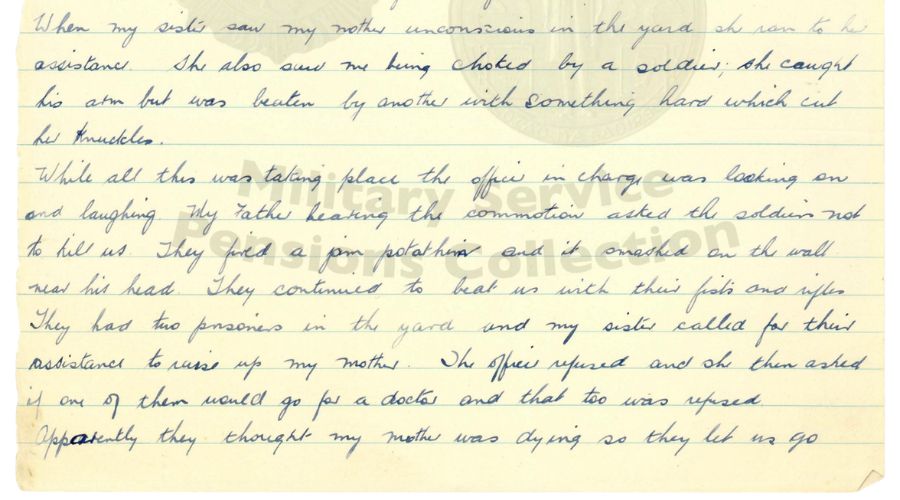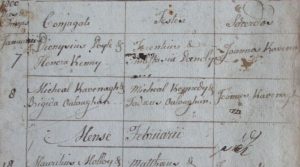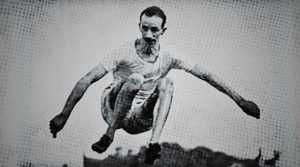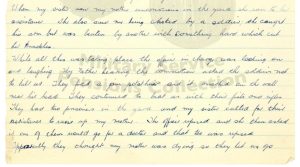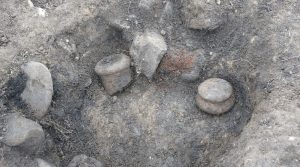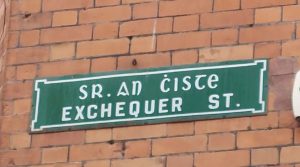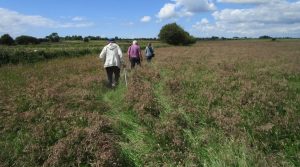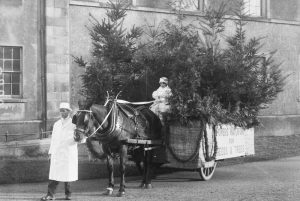Freely accessible military records highlight the scale of women’s contribution to Ireland’s fight for independence, with the actions of Mary and Margaret O’Neill demonstrating the extent to which Cumann na mBan sustained operations in West Cork.
Cumann na mBan (the Irishwomen’s Council) was an Irish nationalist movement founded in 1914 to support the Irish Republican Army (IRA) through the provision of assistance, arms and funds. Membership grew following the Easter Rising of 1916, with a considerable number of branches established in 1917.
A D V E R T I S E M E N T
The earliest members of Cumann na mBan were typically the sisters of local IRA Volunteers. While there are many accounts of brothers fighting side by side, there are also lesser-known reports of significant numbers of women supporting, arming and facilitating their brothers and their comrades. The role of women throughout the War of Independence and the Civil War has been re-evaluated in recent years following the release of military pension records. These demonstrate that women of all ranks carried out dangerous activities, including carrying and concealing arms, retrieving bodies of deceased Volunteers from workhouses, and collecting and communicating intelligence. The role of Cumann na mBan cannot be underestimated – they sustained the Volunteers and thus the war through their efforts. This article focuses on the contribution made by two West Cork sisters: Mary and Margaret O’Neill.
Mary and Margaret O’Neill
Mary O’Neill (later Mrs Walsh of Killountain, Bandon) and Margaret O’Neill (later Mrs O’Meara) from the townland of Clooncalla Beg, between Kilbrittain and Timoleague, joined Cumann na mBan in 1917. The sisters were two of seven siblings who were active in the republican movement.
Sign up to our newsletter
Mary rose to the position of captain of the Kilbrittain Company and later the battalion commandant of the First Southern Division. Throughout 1917, Mary held drills, made haversacks (soldiers’ backpacks), sold flags and collected money. She assisted in the general election of 1918 and held parades against conscription into the British army. This political expression is notable at a time when (some) women over the age of 30 had just secured the right to vote.
>>> RELATED: The landmark general election of 1918
When training camps were held on family land, both sisters helped by making ammunition and filling cartridges. Margaret carried despatches and was officially recognized as a despatch carrier between the brigade, battalion and column. She also scouted and carried arms for Volunteers crossing the Bandon River.
Hostilities were quickly escalating in the district throughout 1918–19, and Cumann na mBan was now providing for “men on the run” – those who could not return to their homes for their own safety, as well as that of their families. During these years, Mary and Margaret’s home was supplying up to 30 additional meals per week. While scouting for the IRA and reporting the movements of the British military locally, it was during this period that Mary had her first encounter with the Royal Irish Constabulary (RIC). In her pension records, she recalled that she was assaulted when the RIC tried to seize a picture featuring Easter week from her home.
A F F I L I A T E A D

During this period, the local IRA was making regular attacks on the RIC and Coast Guard stations, and the Flying Column was very active in the area. Interestingly, it was Mary who carried the news of Tom Hales’ arrest to local battalion officers. Among her other duties was transporting arms and ammunition from Kilbrittain to Newcestown, as well as tending to injured Volunteers. When she was unable to care for the men herself, she made arrangements for them to be attended to by other members of Cumann na mBan.
In the lead-up to an ambush at Rathclarin, Mary made disguises using horse hair and cloth for the IRA and later was forced to quickly dispose of them ahead of an impending RIC raid during which she was “knocked about”. At this time, Mary was in possession of a large sum of money for the IRA’s arms fund.
One of the most notable acts of bravery came when the O’Neill family home was surrounded by the British military led by the notorious Percival in February 1920. The family had been sheltering Volunteer Paddy Crowley, who was awaiting an operation, as well as Mary’s brother Mick. Under the false belief that raids had ceased, Paddy was brought into the house for meals. When the house was surrounded, Paddy and Mick escaped out the back door only to run into Percival; the men turned and ran with Mary and Margaret in pursuit. The sisters did this believing that the military would not fire on women. Mick stopped running and surrendered to give Paddy the chance to escape.
Please help support
Irish Heritage News
A small independent start-up in West Cork
Give as little as €2
Thank You
In the midst of the chase, Percival attempted to climb a gate when Margaret grabbed onto his legs. In retaliation, he beat her around the knuckles with the butt of his rifle, but she only released her grip when he threatened her brother.
Despite their best efforts, Paddy was found dead by another member of Cumann na mBan who was coming to warn the O’Neill family. A wake was held for Paddy in “defiance of the military”. (Read more about Volunteer Lieutenant Paddy Crowley here.)
Mary was appointed district council secretary for the First Southern Division. She sent monthly reports to headquarters in Dublin and was selected to distribute White Cross funds to the families of prisoners in need. She also continued on with her other duties, including the provision of first aid, food, accommodation and clothing.
A D V E R T I S E M E N T
Following an ambush at Gaggan, Mary and her family gave refuge to approximately 80 Volunteers. During this time of heightened threat, she had been instructed not to leave her home and for three days she remained indoors baking bread, making butter and washing clothes for those she sheltered.
Cumann na mBan marched with Volunteers at the funerals of a number of local men, including those who were killed cutting a trench at Crois na Leanbh and the three men who died at Crossbarry. The women were instrumental in retrieving bodies, often from workhouses, as well as organizing funerals.
>>> YOU MIGHT ALSO LIKE: Who was Michael Collins’ mother? Mary Anne O’Brien explored
When the military came to burn the O’Neill home, Mary and Margaret refused to leave. Their father was ill and confined to bed, and their mother was also in poor health. The army raided the pantry for provisions, during which Mary defiantly challenged the commanding officer. Consequently, Mary and Margaret were informed that they were under arrest. However, no charges were given and so Margaret continued on with her housework. She went out to feed the pigs, but the men followed her, pinned her hands behind her back and threw her against a gate.
When they tried to take Mary, her mother intervened, standing between her daughter and the officers. Her mother protested that they could not manage without their girls as they were all they had, to which the commanding officer retorted, “you won’t have them long either”. By this stage, their father had managed to crawl from his bed; a jam jar was thrown at his head that narrowly missed him. The two sisters were beaten with fists and rifles, but their main concern was for their mother and they requested a doctor’s assistance. The ordeal only came to an end when the military believed their mother was dying and Mary was permitted to leave.
While the O’Neill family reported the assault, the story was suppressed and the military denied their claims. Despite the trauma, the O’Neills would go on to house other families whose homes had been destroyed during the war.
Sign up to our newsletter
During the Truce, Cumann na mBan members continued to raise money for the IRA and following the split in the Volunteers, the majority of women took the anti-Treaty side. This meant that they continued all previous activity, but the enemy was now the Free State. Cumann na mBan was the first organization to hold a vote on the Anglo-Irish Treaty, and its members voted overwhelmingly to reject it, with 419 votes to 63.
The women provided for the “Irregulars”, as they were known, until the Civil War ended, but this was carried out at a significant personal cost. The pensions received by the women were considerably less than those received by their IRA counterparts. The pension records (searchable here) give us an invaluable glimpse as to how the daily lives of women were affected during “The Troubles”. Mary’s witness statement can be found here and her pension records appear as two separate files in the Military Service Pensions Collection – file 1 and file 2. Margaret’s pension records appear as three separate files in the Military Service Pensions Collection – file 1, file 2 and file 3.
An earlier version of this article first appeared on Herstoric Ireland (www.herstoricireland.com – no longer online). Reproduced here with permission.
Advertising Disclaimer: This article contains affiliate links. Irish Heritage News is an affiliate of FindMyPast. We may earn commissions from qualifying purchases.
READ NOW
➤ Clogagh: a small West Cork community transformed by the Revolution
➤ “Rebel Wife” film tells the story of Clonakilty heroine Mary Jane O’Donovan Rossa
➤ Pat Deasy: 16-year-old Kilmichael ambush casualty featured in school photo
➤ Life’s unexpected turns for the Mayo-born Margaret Martin who almost boarded the Titanic
➤ The “Lady of the Lake”: Beezie and her island
A D V E R T I S E M E N T

